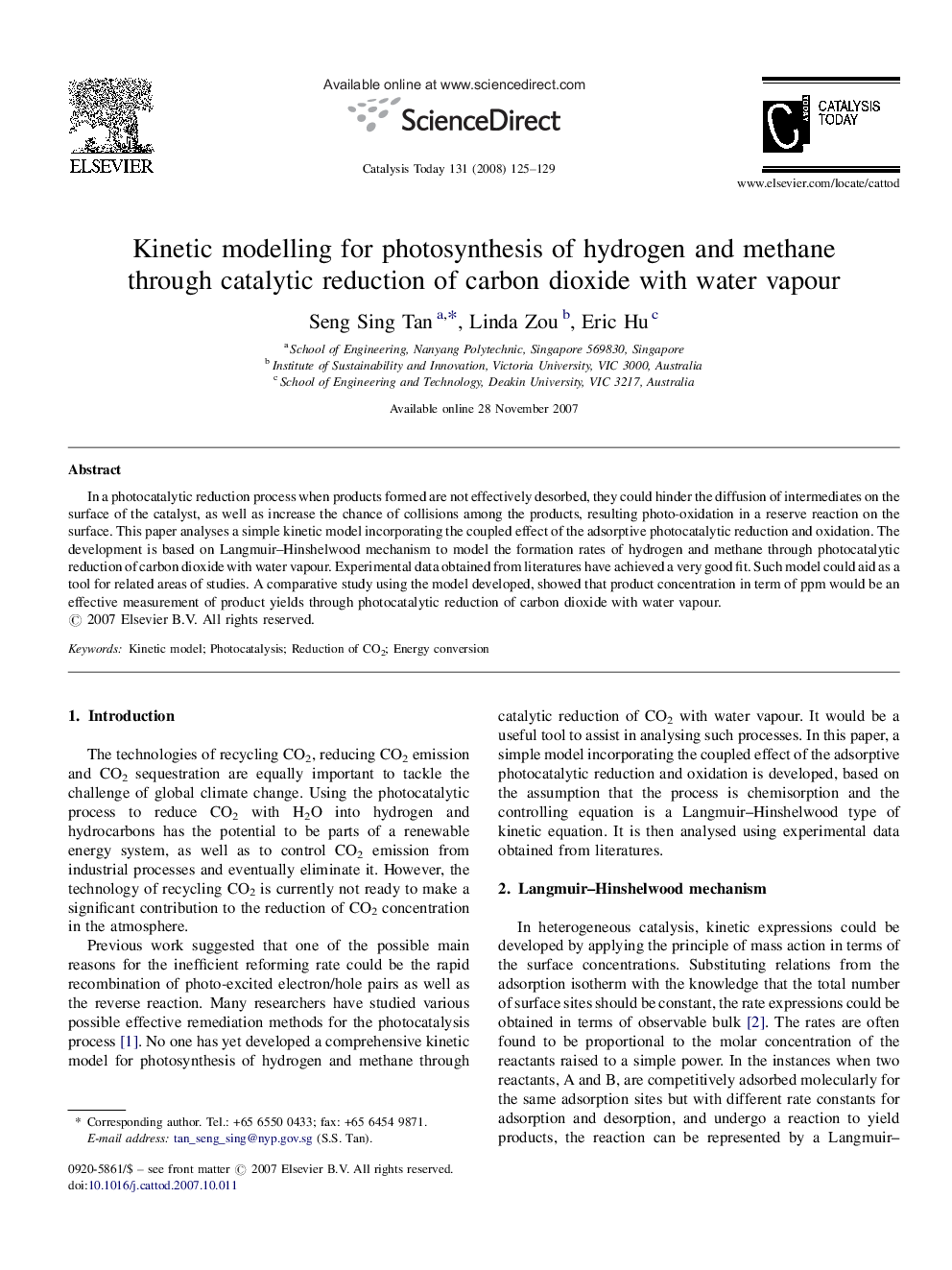| Article ID | Journal | Published Year | Pages | File Type |
|---|---|---|---|---|
| 57669 | Catalysis Today | 2008 | 5 Pages |
In a photocatalytic reduction process when products formed are not effectively desorbed, they could hinder the diffusion of intermediates on the surface of the catalyst, as well as increase the chance of collisions among the products, resulting photo-oxidation in a reserve reaction on the surface. This paper analyses a simple kinetic model incorporating the coupled effect of the adsorptive photocatalytic reduction and oxidation. The development is based on Langmuir–Hinshelwood mechanism to model the formation rates of hydrogen and methane through photocatalytic reduction of carbon dioxide with water vapour. Experimental data obtained from literatures have achieved a very good fit. Such model could aid as a tool for related areas of studies. A comparative study using the model developed, showed that product concentration in term of ppm would be an effective measurement of product yields through photocatalytic reduction of carbon dioxide with water vapour.
